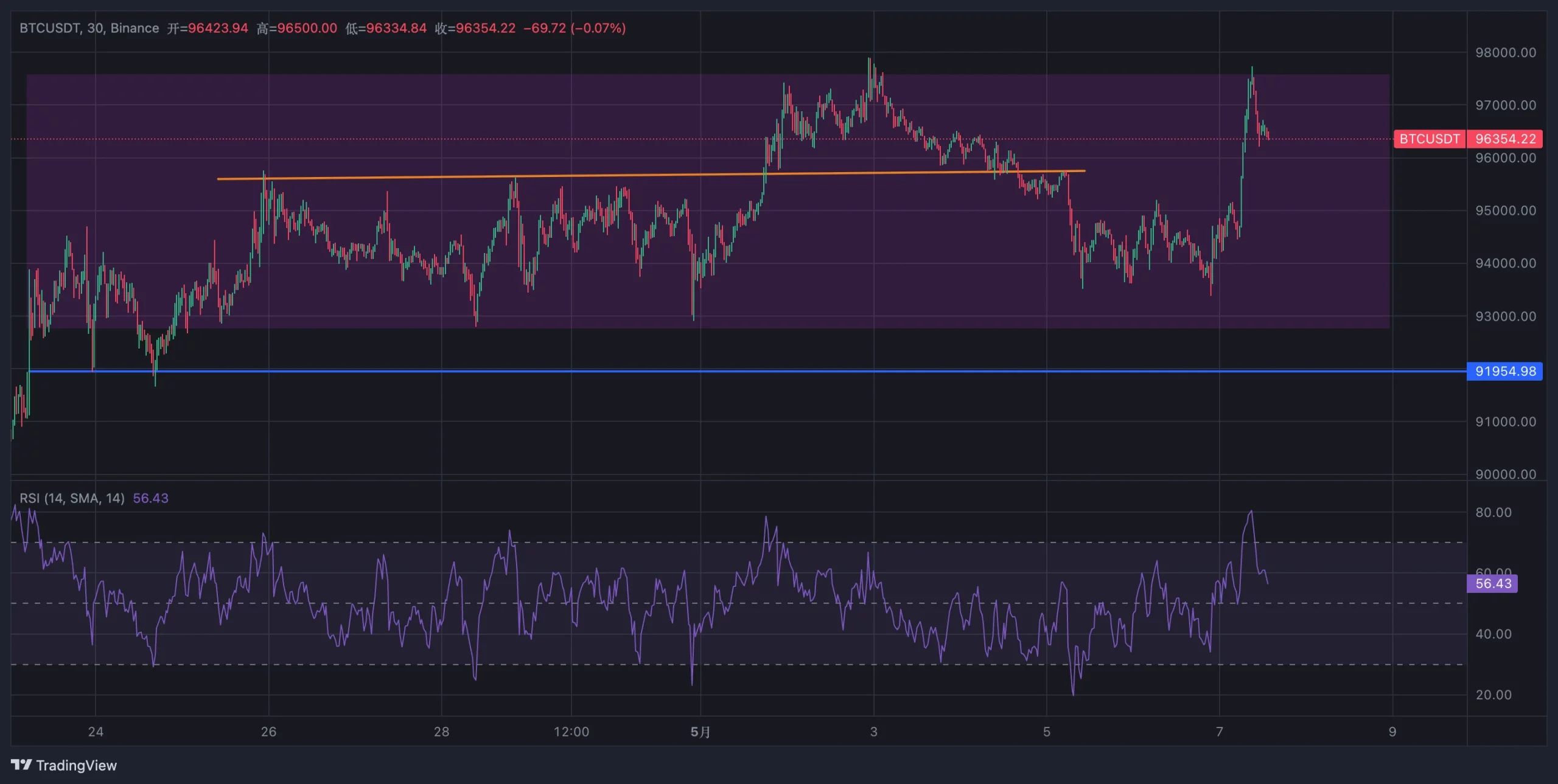
KEYTAKEAWAYS
-
Bitcoin fluctuates between 92k−98k, facing resistance at upper range with potential breakout dependent on economic factors and market sentiment.
-
Four trading strategies for sideways markets: range trading, breakout plays, trend following indicators, and hedging to manage volatility risks.
-
Strict risk management (2-5% per trade, stop-losses) and emotional discipline are crucial when trading Bitcoin's current consolidation pattern.

CONTENT
Recently, Bitcoin has been moving between $92,000 and $98,000, failing several times to break through strong resistance at the top of the range.
The price moves up and down quickly, creating both opportunities and risks for traders. While this type of market can be profitable, it also requires careful planning and risk control.
WHAT MAKES SIDEWAYS MARKETS TRICKY?
Bitcoin is currently stuck around $94,000. It tried to break past $98,000 several times but failed. These “fake breakouts” often trap traders who buy too early. When the price moves above $97,500, many expect it to go higher, but then it drops back to $92,000.

These moves are caused by several things: the U.S. Federal Reserve’s interest rate policy, news about a possible Bitcoin ETF, and even political rumors such as support for crypto from Donald Trump.
On the charts, Bitcoin is forming a triangle pattern between $95,000 and $96,700. This means a big move may be coming soon — but the direction depends on economic data and market mood.
HOW TO TRADE IN THIS MARKET
In a market like this, having a strategy is key. Here are four simple trading methods:
1. Range trading: buy low, sell high
When the price moves between two levels, you can try to buy near support (like $92,000) and sell near resistance (like $97,500).
Use indicators like RSI — if it shows oversold near $92,000, it might be a good time to buy. If RSI is overbought near $97,500, it could be time to sell.
Always set a stop loss to manage risk. For example, if you buy at $92,000, you might set a stop at $91,000 to cut losses if the price drops.
2. Breakout trading: catch the start of a trend
If big news hits — like a Bitcoin ETF approval — the price might break out of the range. If it goes above $96,700 with strong volume and stays above $95,500, it may be a good chance to buy, with a target of $100,000.
If it drops below $92,000 and fails to go back up, it might be heading toward $85,000 — a possible chance to short.
3. Trend following: use indicators for clarity
Even in sideways markets, there are small trends. Tools like MACD and VLMA (volume-weighted moving average) help you see them.
If MACD crosses upward and price is above the VLMA, you may consider buying. If it crosses downward or price falls below VLMA, consider selling.
You can also watch the Fear and Greed Index. If it’s under 20, people are scared — it might be a good time to buy. If it’s over 80, the market may be too excited — time to be cautious.
4. Hedging: lower your risk
If you don’t like risk, consider hedging. For example, if you hold Bitcoin, you can open a short position on futures.
This helps protect your money if the price falls. Some investors also use arbitrage strategies to profit from price differences between platforms.
RISK MANAGEMENT: PROTECT YOUR CAPITAL FIRST
The most important rule in trading is protecting your money. Don’t risk more than 2%–5% of your capital on one trade.
Always set stop-loss and take-profit points before you enter. Also, don’t put all your money into Bitcoin — you can also look at coins like Ethereum (ETH) or XRP to spread the risk.
Watch out for emotional decisions. Don’t buy just because everyone is buying, and don’t panic sell during a drop. Keep an eye on key events like U.S. inflation data or political news, as they can quickly change the market.
FINAL THOUGHTS: STAY CALM, TRADE SMART
Bitcoin may continue to move between $92,000 and $96,700 in the short term. A breakout above $96,700 could push it to $100,000, while a drop below $92,000 could lead to $85,000.
Short-term traders can trade within the range with strict risk rules. Medium-term traders should wait for a breakout before acting. Long-term investors may consider buying small amounts during fear periods for future gains.
A sideways market can be confusing, but with the right strategy and mindset, you can still succeed.
Whether you’re trading the range, following a trend, or using indicators, always follow your plan and manage your risk. Patience and discipline will help you find your way in Bitcoin’s wild market.















